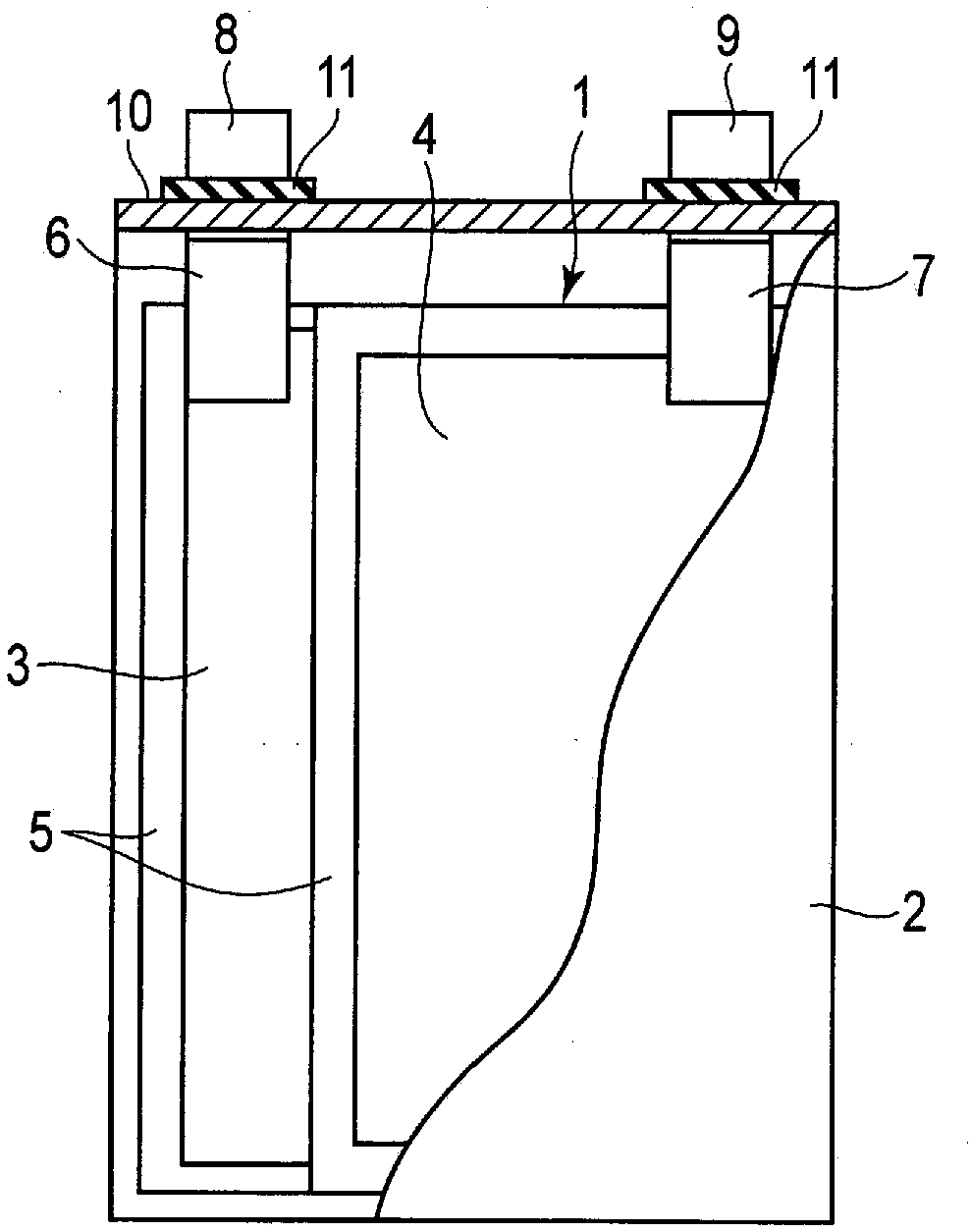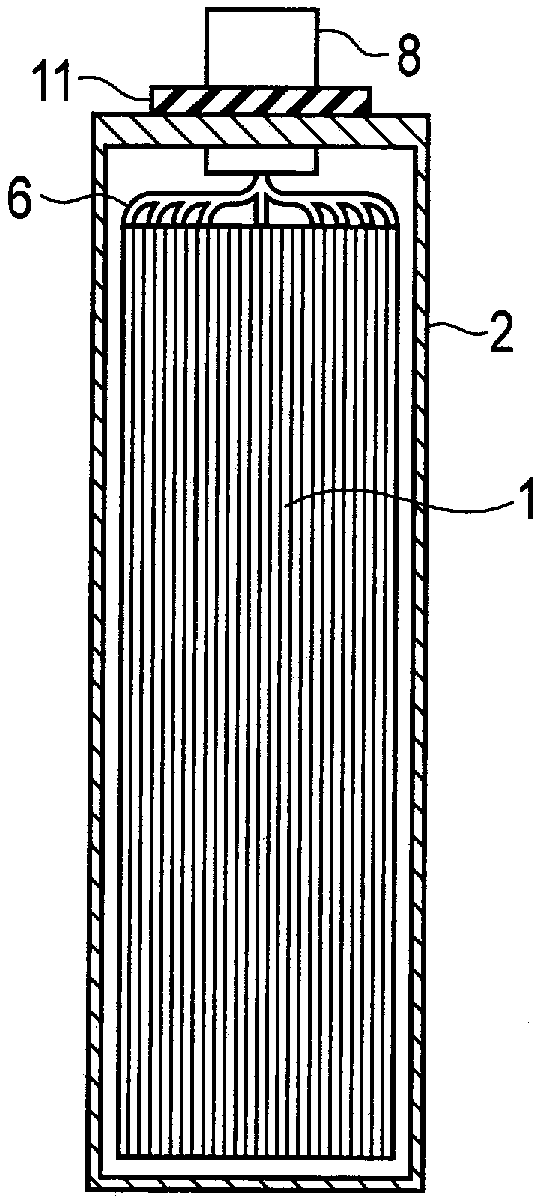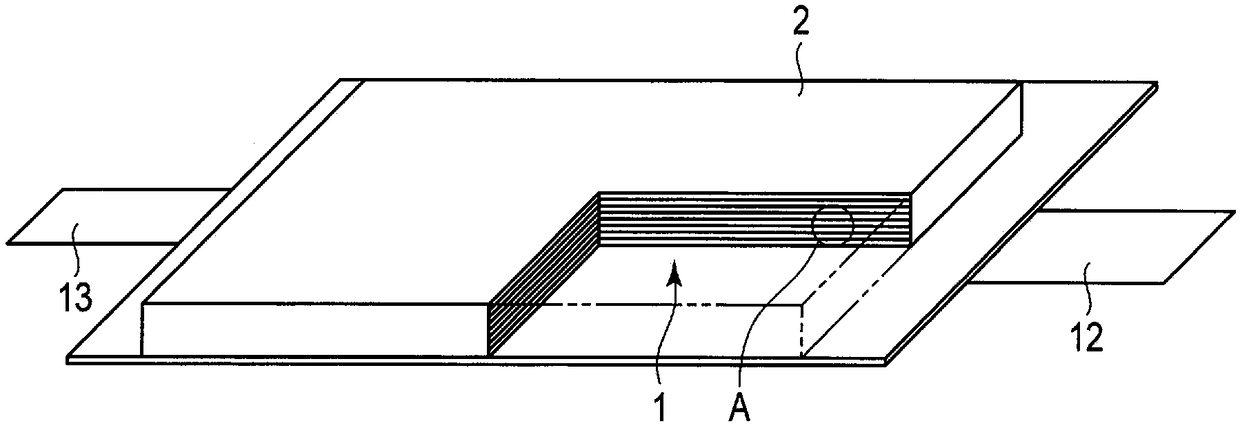Secondary battery, battery pack, and vehicle
A technology for secondary batteries and battery packs, applied in secondary batteries, primary batteries, battery electrodes, etc., can solve the problems of difficulty in achieving low battery resistance, low ionic conductivity, and lack of high current discharge performance.
- Summary
- Abstract
- Description
- Claims
- Application Information
AI Technical Summary
Problems solved by technology
Method used
Image
Examples
no. 1 Embodiment approach
[0024] According to the first embodiment, there is provided a secondary battery including a positive electrode, a negative electrode, a separator, a first electrolyte, and a second electrolyte. The separator is arranged at least between the positive electrode and the negative electrode. The first electrolyte exists at least in the positive electrode. In addition, the first electrolyte contains a lithium salt and an aqueous solvent. The second electrolyte exists at least in the negative electrode. The second electrolyte contains bisfluorosulfonimide salt and an aqueous solvent.
[0025] Bisfluorosulfonyl imide salts, especially lithium bisfluorosulfonyl imide, have excellent solubility in aqueous solvents and dissolve at high concentrations (for example, 8 moL / L or more) in aqueous solvents, so the stability of the second electrolyte can be improved. ionic conductivity. As a result, since the resistance in the negative electrode is reduced, the large current performance of ...
no. 2 Embodiment approach
[0130] According to the second embodiment, it is possible to provide an assembled battery using a secondary battery as a unit cell. As the secondary battery, the secondary battery of the first embodiment can be used.
[0131] Examples of the battery pack include a battery pack including a plurality of unit cells electrically connected in series or in parallel as a constituent unit, a unit including a plurality of unit cells electrically connected in series, or A battery pack or the like of a unit composed of a plurality of unit cells electrically connected in parallel. In a battery pack, multiple types of unit cells or multiple types of cells may be combined.
[0132] A battery pack may also be accommodated in the housing. As the case, a metal can, a plastic container, or the like formed of aluminum alloy, iron, stainless steel, or the like can be used. In addition, the plate thickness of the container is preferably set to 0.5 mm or more.
[0133] Examples of the form in w...
no. 3 Embodiment approach
[0137] According to the third embodiment, it is possible to provide a battery pack including at least one secondary battery according to the first embodiment and a circuit unit for controlling charging and discharging of the secondary battery. A plurality of secondary batteries may be electrically connected in series, in parallel, or a combination of series and parallel. When a battery pack is formed from a plurality of secondary batteries, the battery pack of the second embodiment can be used.
[0138] A battery pack may have a circuit unit connected to a secondary battery before being mounted on a vehicle such as an automobile or an electronic device, but the battery pack in the embodiment includes a battery pack in which a circuit unit included in a vehicle such as an automobile is connected to a secondary battery. As an example of the circuit unit, a protection circuit is included. The protection circuit has a function of controlling charge and discharge of the lithium se...
PUM
| Property | Measurement | Unit |
|---|---|---|
| The average particle size | aaaaa | aaaaa |
| Thickness | aaaaa | aaaaa |
| The average particle size | aaaaa | aaaaa |
Abstract
Description
Claims
Application Information
 Login to View More
Login to View More - R&D
- Intellectual Property
- Life Sciences
- Materials
- Tech Scout
- Unparalleled Data Quality
- Higher Quality Content
- 60% Fewer Hallucinations
Browse by: Latest US Patents, China's latest patents, Technical Efficacy Thesaurus, Application Domain, Technology Topic, Popular Technical Reports.
© 2025 PatSnap. All rights reserved.Legal|Privacy policy|Modern Slavery Act Transparency Statement|Sitemap|About US| Contact US: help@patsnap.com



